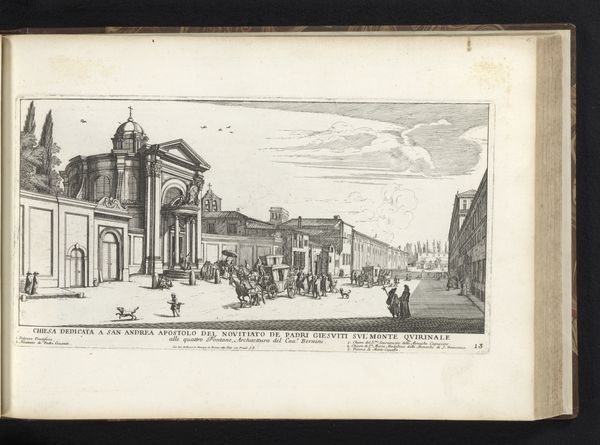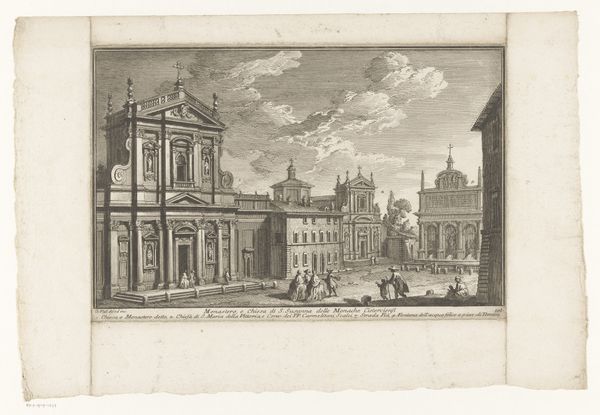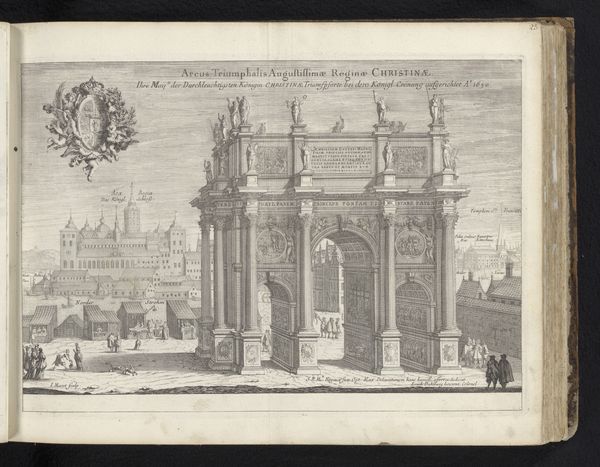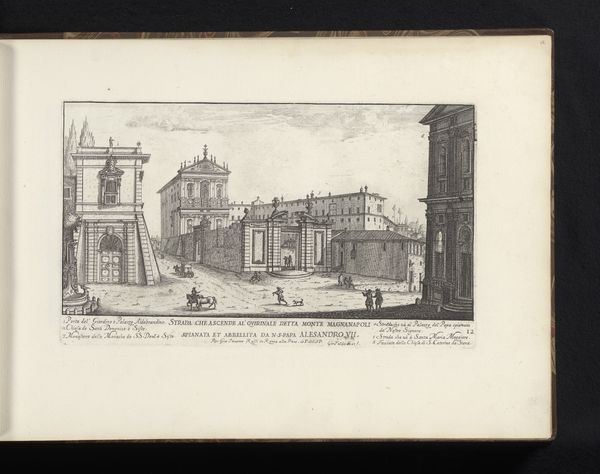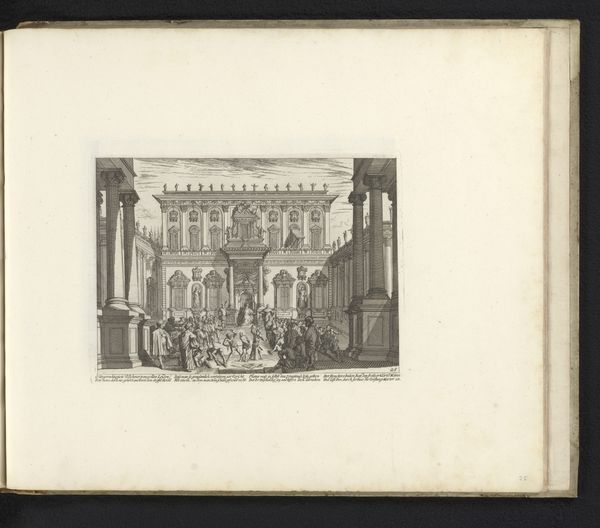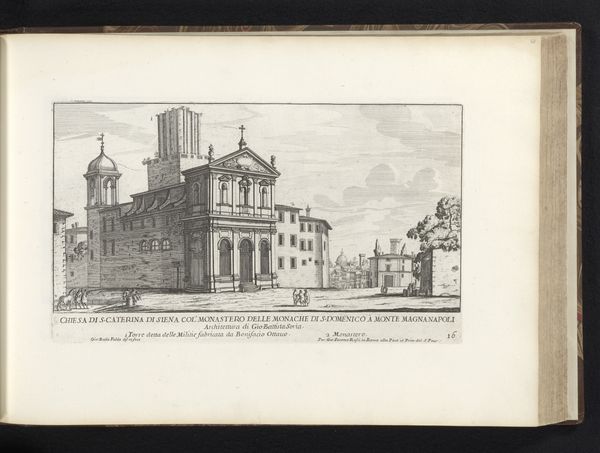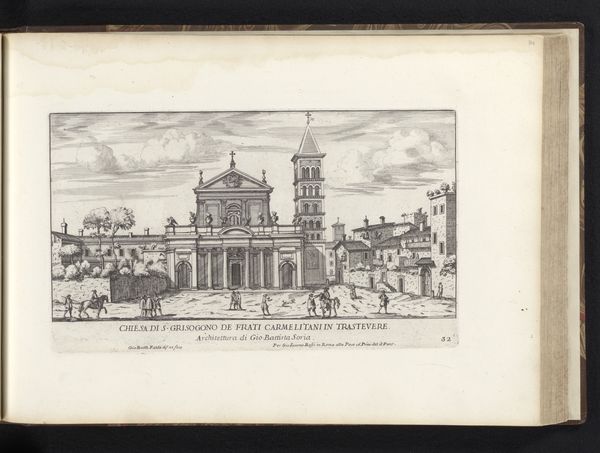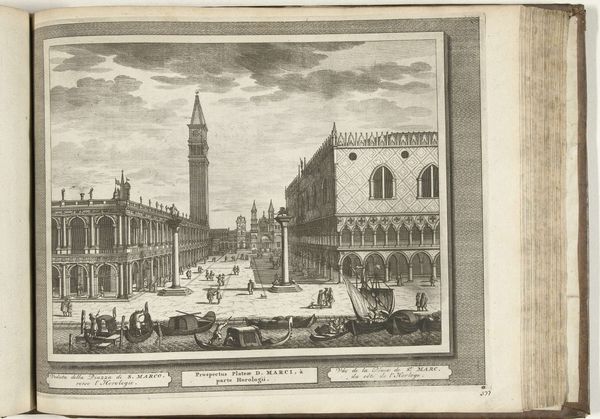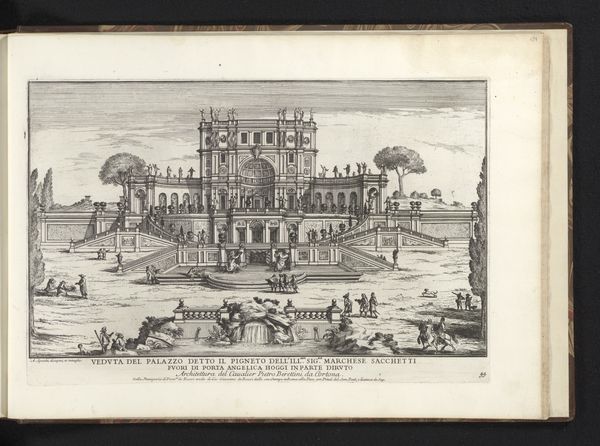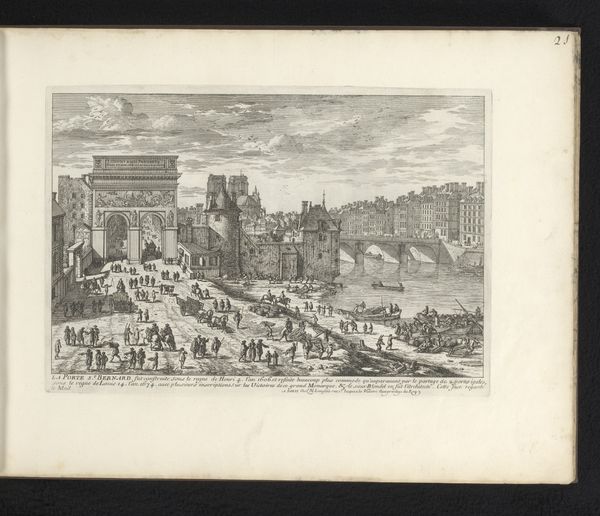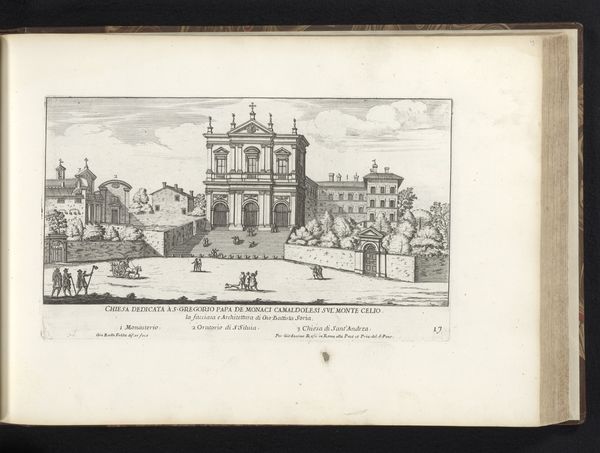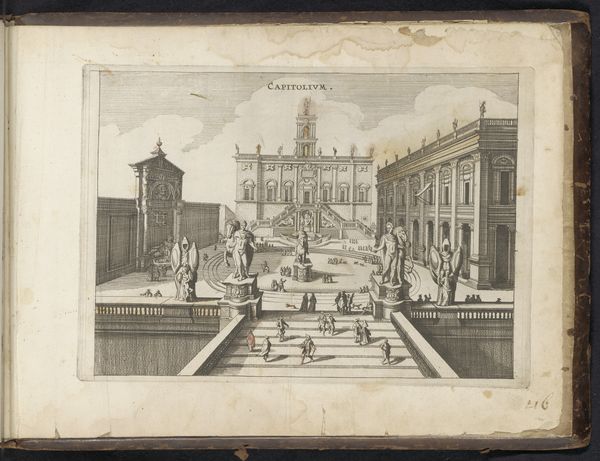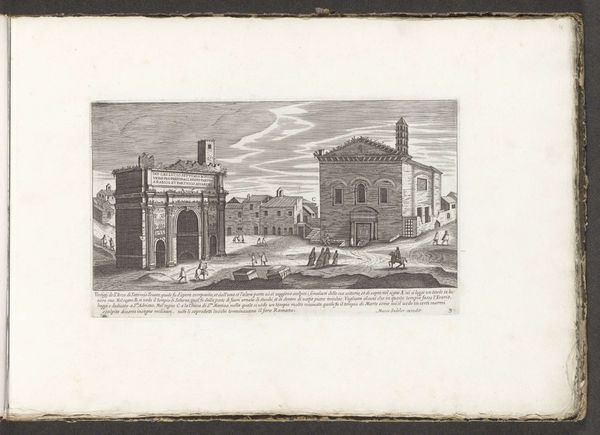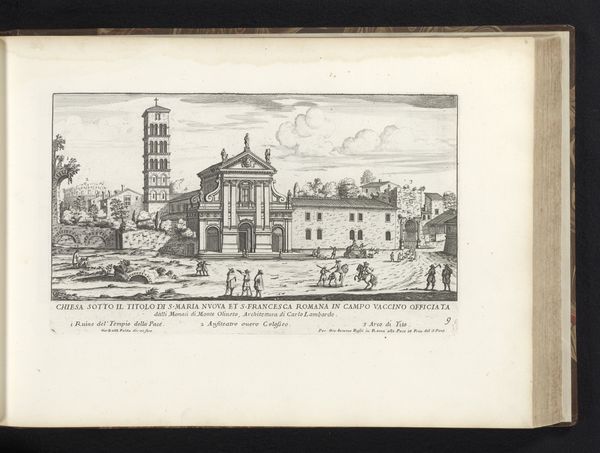
Triomfboog opgericht na de terugkeer van de zegenvierende Zweedse koning Karel IX 1692
0:00
0:00
print, engraving
#
baroque
# print
#
landscape
#
cityscape
#
history-painting
#
engraving
Dimensions: height 216 mm, width 339 mm
Copyright: Rijks Museum: Open Domain
Willem Swidde’s engraving depicts the triumphal arch erected to celebrate the return of the Swedish King Charles IX, capturing a moment laden with political and social implications. The image presents a formal procession, a display of power meant to solidify the monarchy’s position. Consider the role of such displays in shaping national identity and the perception of authority. How did these spectacles function to reinforce social hierarchies and legitimize the rule of kings? The Swedish Empire’s aspirations and the king’s persona are reflected in this triumphal scene. What does it mean to construct such an image of victory? How might those excluded from this spectacle, the working class or conquered populations, have perceived this display of dominance? How does this image both maintain traditional representations of power while subtly revealing the anxieties of a regime seeking to assert its legitimacy in a changing world? Reflect on how such images contribute to a collective memory, shaping our understanding of history and power. What emotions does this evoke, and what does it tell us about the relationship between art, power, and identity?
Comments
No comments
Be the first to comment and join the conversation on the ultimate creative platform.
